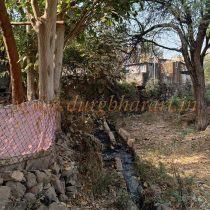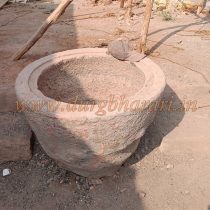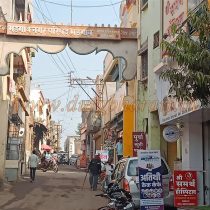BHADGAON
TYPE : CITY FORT
DISTRICT : JALGAON
HEIGHT : 0
If you stay alert while wandering in Maharashtra, you will find something or other historical buildings in important cities which signifies the importance and tells us about its old identity. Bhadgaon is one such important city located on the bank of Girna River in Jalgaon district. The identity of Bhadgaon is very ancient and the old experts here say that this city got the name Bhadgaon due to the residence of sage Bhrugu. This city present in Bhadgaon taluka is located in the central part of the cities of Chalisgaon, Parola, and Erandol and is 64 km from Jalgaon. A fort was erected around the entire city to protect this flourishing city during the medieval period and the remains of this fort can still be seen today. Increasing urbanization has caused damaged to the remains of this fort, and these remains are now scattered around the city. Bhadgaon city is surrounded by Girna river bed on three sides and one remaining gate of this fort is in the direction of this river bed.
...
Near this door there is a temple of Mahadev and a newly built temple of Ganapati. The ramparts adjacent to this west-facing gate still remain to some extent and a ruined bastion can be seen in this rampart. After entering through this door, after going straight on the second left road, at the end of this road, a well-preserved circular bastion with stone construction is seen. The upper structure of this 25 feet high bastion is made of bricks and a new house has been constructed adjacent to it. A landmark is the Abasaheb Datta Pawar Industrial Training Institute near this bastion. Apart from this, one more bastion can be seen near Badi Mohalla Graveyard. After leaving here, come near Ladkubai Vidya Mandir School. A 50 feet high bastion built entirely of bricks can be seen in the premises of this school. This bastion is hollow inside and it can be seen that it has accommodation facilities by building floors and walls above it. As the bastion has collapsed on one side, it is not possible to go to the upper part of it. This bastion is not part of the ramparts of this Nagarkot and must have been built separately for surveillance purposes. The fort of Ladkubai Deshpande was near here. Today Ladkubai Vidya Mandir School stands on the site of this fortress. A bastion of the fortress is still standing near this school and it is unrecognizable due to plastering on it. A monument of the fort is left near this bastion and its renovation has started. Apart from this, we can see another spacious bastion of this Nagarkot along the road on Bhadgaon Kasoda route. This bastion is 25 feet high and the lower part of the bastion is made of stones and the upper part is made of bricks. On the upper part of the bastion, embrasure in the walls are visible. Coming out of Mahadev Galli of Bhadgaon Peth, there is a Hanuman temple at the end of the lane. At the back of this temple, one can see Vrindavan in a beautiful stone structure. Here our tour of Bhadgaon Nagarkot ends. On the other side, on the banks of the river Girna, there is a temple of Sri Chakradhar Swami of the Mahanubhav sect and it is said that he stayed under a tree for 15 days at this place. Although the wada (mansion) of Ladkubai Deshpande remains a little bit today, the wada was a kind of fortress. This fortress was built in the early seventeenth century. When Khandesh became part of the Mughal Empire in AD 1601, Ramjipant Deshpande of Bhadgaon performed well in the siege of Ashirgad on behalf of the Mughals. Hence he got the title of Raja of Nashirabad along with the chieftain of Nashirabad, Erandol, Jamner, Bahal, and Bhadgaon. Bhadgaon flourished when Ramjipant Deshpande moved the headquarters from Nashirabad to Bhadgaon. Ramjipant built a fortress at Bhadgaon. After the death of Ramjipant, his wife Ladkubai Deshpande started to look after the management of this area. She killed about 300 Bhil marauders on the banks of the Girna and established her hold on the area. Because of her, people started to know Bhadgaon as Ladkubai Bhadgaon. The kingdom of Parmar family in Malwa Province After the invasion of Aladdin Khilji in 1305 AD, the descendants of Parmar family of Dhar went and settled in different provinces. One branch of it came to Maharashtra and emerged as Pawar. After the assassination of Sambhaji Maharaj, the name of the Pawar brothers appears among the Maratha chieftains who fought with the Mughals during the crisis that fell on the Maratha dynasty. Due to the faith given by Rajaram Maharaj, the forces of Buvaji and Keroji rushed through the Mughals' territory in Warhad and Gangathadi and recovered everything, surprising the Mughal forces and increasing their anger. Therefore, he got, Bahal Pargana and Bhadgaon Pargana in Jalgaon district of Khandesh. Sardar Pawar made his main place at Nagardevale and built a fort like Palace there and Bhadgaon became less important and Nagardevale gained importance.
© Suresh Nimbalkar



















